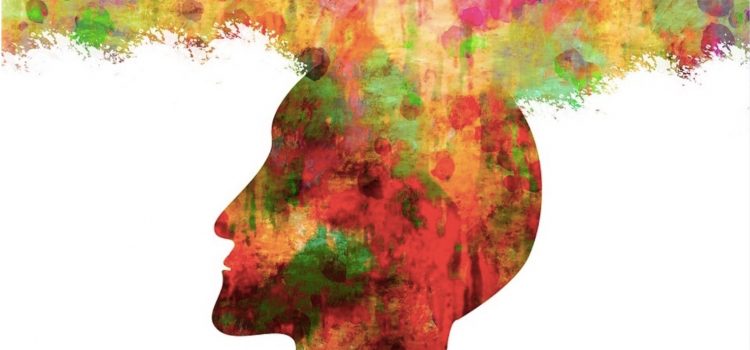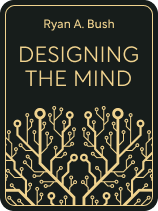

This article is an excerpt from the Shortform book guide to "Designing the Mind" by Designing the Mind and Ryan A Bush. Shortform has the world's best summaries and analyses of books you should be reading.
Like this article? Sign up for a free trial here.
Do you want to free your mind from psychological biases? Is it possible to be 100% free from bias?
While it’s not possible to be totally free from bias, you can actively work to reduce it with study and practice. As a result of overcoming your biases, you will view the world more objectively, make better decisions, and become less prone to anxiety fueled by biased thinking.
Keep reading to learn how to overcome cognitive biases.
How to Overcome Your Biases
To more accurately perceive reality, you need to learn how to overcome cognitive biases, which can be a difficult process because we typically struggle to see our own biases, even when we can recognize them in other people.
(Shortform note: The inability to recognize our own biases comes from a psychological phenomenon called naive realism: an egocentric bias in which we believe that our perception of reality represents objective truth. Thus, we assume that any perspective that contradicts our own is biased. Theoretically, as children develop and learn logical reasoning skills, their naive realism diminishes. In practice, however, many people are still limited by this bias into adulthood. This can lead to strong divisions over anything from debates among friends about the merits of a TV show to widespread conflicts over differing political views.)
Let’s explore three ways to overcome biases: through mindfulness, self-study, and reflection.
Practice #1: Use Mindfulness to Overcome Biases
As we mentioned earlier, mindfulness practice can be a good way to start building awareness of your cognitive processes, including your biases. According to Bush, it allows you to focus your attention on patterns of thinking that would otherwise be automatic.
| Specific Practices for Using Mindfulness to Reduce Bias Mindfulness helps you cultivate conscious awareness of yourself and the world around you, encouraging nonjudgmental observation and a commitment to regular introspection. As Bush suggests, this introspection may make identifying your personal biases and behavioral patterns easier as you get to know yourself better. Here are three mindfulness practices you can use to recognize your biases and change your biased behavior: 1) Practice being aware of your emotions. Negative emotions that we often shy away from—like judgment, apathy, and fear—can be important indicators of biased thoughts and impulses. 2) Separate your sense of self from negative thought patterns. Mindfulness involves decentering your thoughts and emotions and recognizing that they don’t always represent the truth. When you recognize that your biased thoughts are temporary and not necessarily a reflection of who you are, you can more objectively examine them. 3) Use a loving-kindness meditation. The Buddhist practice of loving-kindness involves wishing yourself, your loved ones, your enemies, and finally the whole world well. This meditation increases feelings of connectedness, and research shows that it substantially decreases unconscious bias toward marginalized groups. |
Practice #2: Use Self-Study to Overcome Biases
Bush also advises learning about the most common biases so you can begin recognizing them in yourself. Study them using multiple sources, and familiarize yourself with the situations that normally trigger them.
(Shortform note: Bush suggests self-studying cognitive biases as a way to begin overcoming them, but if you want a little more structure in your learning, consider taking a course on the topic. There are many online options on platforms like Udemy, and some universities also offer cognitive bias courses.)
Practice #3: Use Reflection to Overcome Biases
Once you identify a bias you have, Bush advises trying to notice every situation that triggers it. Instead of acting based on your biased thinking, pause to reflect. Consciously create an alternative, unbiased thought pattern and act based on this new pattern. The more often you do this for the same type of situation, the more intuitive your new thought pattern will become. Eventually, it’ll replace the biased thought pattern entirely.
| Strategies for Recognizing and Overcoming Unhelpful Thought Patterns How can you recognize your biases and identify new thought patterns to take their place? One way to identify problematic thought patterns is by cultivating curiosity in everything you do—examine your thoughts about different situations, and ask yourself why you’re responding in a certain way. Using curiosity, you can observe your thoughts nonjudgmentally. The curious mindset also helps you to accept that there are multiple ways of thinking about a situation—instead of staying stuck in one thought pattern, ask yourself, “What’s another way to interpret what’s just happened?” If you’ve identified an unhelpful thought pattern but you’re having trouble thinking of a healthier alternative, consider asking someone else for their input, such as a therapist or a trusted friend. When you’re stuck, hearing someone else’s perspective can help you see the situation in a new light. |
Bias Example: Rewriting Confirmation Bias
As Bush mentions, one well-known and universal cognitive bias is confirmation bias. When under its influence, we place a disproportionately high value and strong focus on information that confirms our existing beliefs while ignoring or denying information that contradicts those beliefs. An example of a triggering situation for confirmation bias might be reading an article that represents an opposing opinion on a political issue that’s important to you: You might immediately dismiss it as illogical, irrelevant, or further confirmation that the other side doesn’t know what they’re talking about.
Confirmation bias can limit your exposure to new information and ideas, preventing important growth and change. Therefore, it’s useful to identify and reduce this bias in yourself.
| Strategies for Overcoming Confirmation Bias To reduce the influence of confirmation bias on your beliefs, always consider the credibility of the source you’re reading—what might their agenda be? Where do they get their information, and is the evidence they’re using to support their points legitimate? What is the article actually trying to say? If you can answer these questions for every article you read (including those that support your current beliefs), you’ll be able to better determine the quality of the information. In the future, before settling on a final opinion about an issue, read articles from different sources and different perspectives and keep an open mind to ideas you don’t immediately agree with. This will help you move past the limitations of confirmation bias, and it’ll give you a more objective framework for evaluating arguments on any issue. |

———End of Preview———
Like what you just read? Read the rest of the world's best book summary and analysis of Designing the Mind and Ryan A Bush's "Designing the Mind" at Shortform.
Here's what you'll find in our full Designing the Mind summary:
- How the mind can be reprogrammed like a computer
- Strategies to help you change negative thought patterns, emotions, and behaviors
- How to eliminate your biases to perceive reality more accurately






